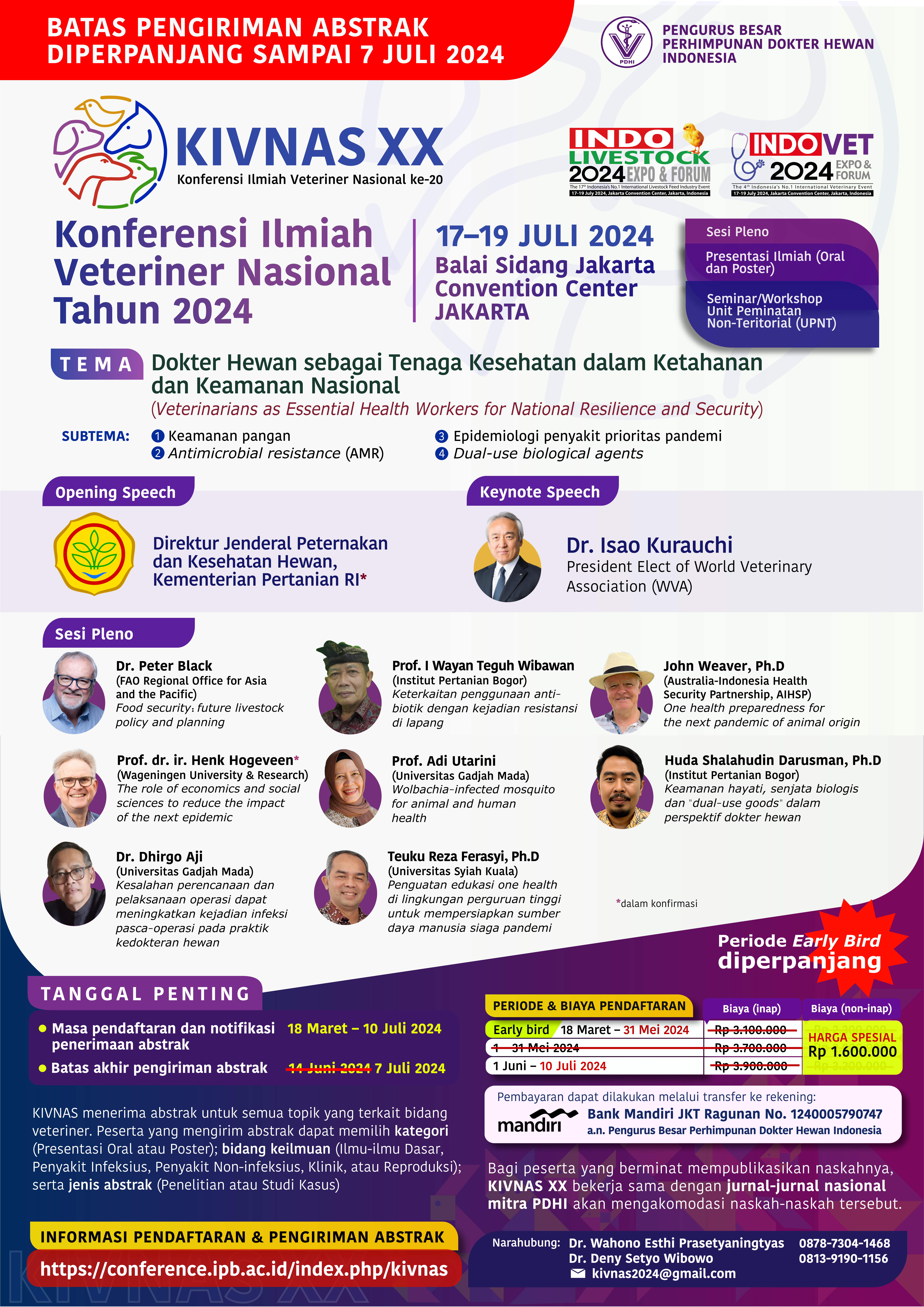Estimation of Economic Losses due to Lumpy Skin Disease in Beef Cattle in Riau Province
Keywords:
Lumpy skin disease, Beef cattle, Estimation of Economic Losses, Disease control, Riau ProvinceAbstract
Background: Lumpy skin disease (LSD) is a disease caused by the lumpy skin disease virus from the genus Capripoxvirus, with the pathognomonic symptom being the emergence of nodules on the skin of infected livestock. LSD was first reported in Indonesia in Riau Province in February 2022. Although its mortality rate is low, it can cause significant economic losses due to decreased body weight, reduced milk production, reproductive disorders and abortions, as well as decreased livestock prices due to skin damage.
Objective: This study aims to calculate the economic losses caused by the LSD outbreak in beef cattle in Riau Province.
Method: Economic loss estimates were made by calculating direct losses on farms and indirect losses due to disease control costs. Data for calculations were obtained from field data, departmental data, scientific publications, expert opinions, market data, and assumptions based on expert discussions.
Results: The direct losses caused by LSD disease to the livestock production system are approximately IDR 15,876,462,618.00, and the indirect losses due to additional costs for LSD prevention and control efforts are approximately IDR 13,433,564,500.00, resulting in a total loss of IDR 29,310,027,118.00. In addition to the above losses, the LSD outbreak also affected the disruption of beef cattle trading activities in Riau Province due to restrictions on cattle traffic resulting from the LSD outbreak, with an estimated value of around IDR 10,242,500,000.00.
Conclusion: The introduction of LSD in Riau Province has resulted in economic losses totaling IDR 29,3 billion and other losses amounting to IDR 10,2 billion. The LSD control program in Riau Province can protect livestock assets.



